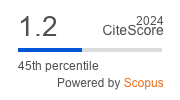ОБОСНОВАНИЕ ВЫБОРА ВСПОМОГАТЕЛЬНЫХ КОМПОНЕНТОВ НАЗАЛЬНОГО СПРЕЯ НАЛТРЕКСОНА ГИДРОХЛОРИДА
Аннотация
Ключевые слова
Об авторах
Ю. М. ДомнинаРоссия
С. А. Кедик
Россия
В. В. Суслов
Россия
Е. А. Шняк
Россия
Список литературы
1. Resnick R. B. et al. Studies of EN-1639A (naltrexone): a new narcotic antagonist // American Journal of Psychiatry. 1974. V. 131. № 6. С. 646-650.
2. Patten D. K., Schultz B. G., Berlau D. J. The Safety and Efficacy of Low-Dose Naltrexone in the Management of Chronic Pain and Inflammation in Multiple Sclerosis, Fibromyalgia, Crohn’s Disease, and Other Chronic Pain Disorders // Pharmacotherapy: The Journal of Human Pharmacology and Drug Therapy. 2018. V. 38. № 3. С. 382-389.
3. Elsegood L. The LDN Book: How a Little-Known Generic Drug - Low Dose Naltrexone - Could Revolutionize Treatment for Autoimmune Diseases, Cancer, Autism, Depression, and More. - Chelsea Green Publishing, 2016.
4. Ringerike T., Pike E., Nevjar J., Klemp M. NIPH systematic reviews: executive summaries, The Use of Naltrexone in Low Doses Beyond the Approved Indication, Knowledge Centre for the Health Services at The Norwegian Institute of Public Health (NIPH) Copyright (c)2015 by The Norwegian Institute of Public Health (NIPH). Oslo, Norway, 2015.
5. Brown N., Panksepp J. Low-dose naltrexone for disease prevention and quality of life, Med. Hypotheses. 2009. V. 72. P. 333-337.
6. Donahue R. N., McLaughlin P. J., Zagon I. S. Low-dose naltrexone suppresses ovarian cancer and exhibits enhanced inhibition in combination with cisplatin, Exp. Biol. Med. (Maywood, NJ). 2011. V. 236 P. 883-895.
7. Dodou K., Armstrong A., Kelly I., Wilkinson S., Carr K., Shattock P. et al. Ex vivo studies for the passive transdermal delivery of low-dose naltrexone from a cream; detection of naltrexone and its active metabolite, 6beta-naltrexol, using a novel LC Q-ToF MS assay, Pharm. Dev. Technol. 2015. V. 20. P. 694-701.
8. Данилов А. Б. Фибромиалгия: новые возможности терапии // РМЖ. 2010. Т. 18. № 16. С. 998-1003.
9. Ramanathan S., Panksepp J., Johnson B. Is fibromyalgia an endocrine / endorphin deficit disorder? Is low dose naltrexone a new treatment option? // Psychosomatics. 2012. V. 53. № 6. С. 591-594.
10. Smith J. P. et al. Low-dose naltrexone therapy improves active Crohn’s disease //The American journal of gastroenterology. 2007. V. 102. № 4. С. 820.
11. Parker C. E. et al. Low dose naltrexone for induction of remission in Crohn’s disease //The Cochrane database of systematic reviews. 2018. V. 4. P. 10-25.
12. Agrawal Y. P. Low dose naltrexone therapy in multiple sclerosis // Medical hypotheses. 2005. V. 64. № 4. С. 721-724.
13. Yi Z. et al. Functional modulation on macrophage by low dose naltrexone (LDN) //International immunopharmacology. 2016. V. 39. С. 397-402.
14. Liu W. M. et al. Naltrexone at low doses upregulates a unique gene expression not seen with normal doses: Implications for its use in cancer therapy//International journal of oncology. 2016. V. 49. № 2. С. 793-802.
15. Li Z. et al. Low-dose naltrexone (LDN): A promising treatment in immune-related diseases and cancer therapy//International immunopharmacology. 2018. V. 61. С. 178-184.
16. Younger J., Parkitny L., McLain D. The use of low-dose naltrexone (LDN) as a novel anti-inflammatory treatment for chronic pain //Clinical rheumatology. 2014. Т. 33. № 4. С. 451-459.
17. Skulberg A. K. et al. Pharmacokinetics and-dynamics of intramuscular and intranasal naloxone: an explorative study in healthy volunteers// European journal of clinical pharmacology. 2018. С. 1-11.
18. Vyas T. K. et al. Intranasal drug delivery for brain targeting // Current drug delivery. 2005. V. 2. № 2. С. 165-175.
19. Appasaheb P. S. et al. A review on intranasal drug delivery system // Journal of Advanced Pharmacy Education & Research Oct-Dec. 2013. V. 3. № 4.
20. Vyas T. K. et al. Intranasal drug delivery for brain targeting // Current drug delivery. 2005. V. 2. № 2. С. 165-175.
21. Lochhead J. J., Thorne R. G. Intranasal delivery of biologics to the central nervous system // Advanced drug delivery reviews. 2012. V. 64. № 7. С. 614-628.
22. Привалова А. М., Гуляева Н. В., Букреева Т. В. Интраназальное введение перспективный способ доставки лекарственных веществ в мозг // Нейрохимия. 2012. Т. 29. № 2. С. 93-93.
23. Kaur P. et al. In situ nasal gel drug delivery: A novel approach for brain targeting through the mucosal membrane // Artificial cells, nanomedicine, and biotechnology. 2016. V. 44. № 4. С. 1167-1176.
24. Sharma N. et al. Mucoadhesive thermoreversible nasal delivery system // Journal of Pharmacy Research. 2010. V. 3. С. 991-997.
25. Karavasili C., Fatouros D. G. Smart materials: in situ gel-forming systems for nasal delivery //Drug discovery today. 2016. V. 21. № 1. С. 157-166.
26. Agnese T. et al. Характеристики температуры, способствующей гелеобразованию различных полоксамеров // Фармацевтическая отрасль. 2013. № 5. С. 110-112.
27. European Pharmacopoeia 8.0 ed. 2014. 2820 c.
28. Lindemann J. et al. Nasal mucosal temperature during respiration // Clinical Otolaryngology & Allied Sciences. 2002. V. 27. № 3. С. 135-139.
29. Dayal P., Shaik M. S., Singh M. Evaluation of different parameters that affect droplet-size distribution from nasal sprays using the Malvern Spraytec® //Journal of pharmaceutical sciences. 2004. V. 93. № 7. P. 1725-1742.
Рецензия
Для цитирования:
Домнина Ю.М., Кедик С.А., Суслов В.В., Шняк Е.А. ОБОСНОВАНИЕ ВЫБОРА ВСПОМОГАТЕЛЬНЫХ КОМПОНЕНТОВ НАЗАЛЬНОГО СПРЕЯ НАЛТРЕКСОНА ГИДРОХЛОРИДА. Разработка и регистрация лекарственных средств. 2018;(4):73-77.
For citation:
Domnina Y.M., Kedik S.A., Suslov V.V., Shnyak E.A. RATIONALE FOR THE SELECTION OF AUXILIARY COMPONENTS FOR THE NALTREXONE HYDROCHLORIDE NASAL SPRAY. Drug development & registration. 2018;(4):73-77. (In Russ.)









































